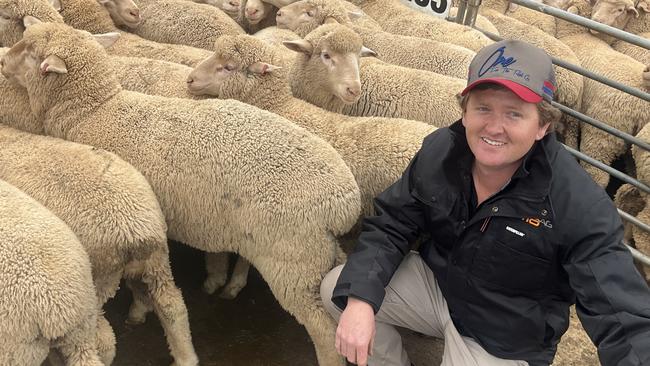Cattle, sheep prices: Supply and confidence the key words for restockers
Why are cattle sales currently feeling like parties and sheep sales more grim affairs? See the data and what it means for the future.
Supply and confidence are the two factors that have cattle and lamb prices going in opposite directions.
And for sheepmeat it seems unlikely that the power of green feed will be able to rebound the market like it has for beef.
Attending saleyards nearly every day last week highlighted the stark difference between cattle and lamb, with the Wangaratta special store weaner sale like a party compared to the grim mood that now prevails at lamb and sheep markets.
It comes down to the financials.

At Wangaratta on Friday, 3542 mostly weaner steers and heifers averaged $2056, which in dollar-a-head terms means the market is still delivering similar money to the much celebrated calf sales of the past 18 months.
For lamb, the average price paid by processors on Monday was $172 for heavy crossbreds at an estimated cost of 636c/kg carcass weight after the auction system shed another $20 to $40 a head at saleyards like Bendigo, Dubbo and Corowa.
Lamb prices are now nearly 300c/kg lower than they were this time last year, which represents a major problem for farmers who invested heavily in store stock to finish this winter. A 300c/kg drop on a 30kg lamb represents an income cut of nearly $100 a head year-on-year.
If you equate it back to simple carrying capacity, running 10 lambs to one 500kg steer means the market change for lamb is the equivalent of dropping $1000 a head on feeder cattle.
And that is a key reason to why the boom spring is not going to be the saviour for young lamb and sheep like it will be for young cattle.
The lamb market has been erratic and disappointing, traders have struggled to make a profit, the industry now accepts there is a bigger flock out there producing more lambs, and confidence is at a low ebb heading into spring
It’s not just rhetoric but showing up in actual lamb data. To explain:
HOGGETS: There were more than 10,000 hoggets or two-tooths recorded by National Livestock Reporting Service reporters at saleyards last week, a 51 per cent increase on the same week a year ago. It attests to the desperation some producers have experienced, effectively holding stock to the point of teeth cutting which guarantees an income hit. There have been big lines of two-tooths coming through numerous saleyards, not just the odd few of a normal season.
HEAVY OLD LAMBS: The supply pool of heavy lambs (22kg carcass weight and heavier) at saleyards in the past two weeks has topped 70,000 head, according to NLRS figures. Once again, it highlights the backlog of old lambs that were being held as farmers tried to avoid selling into the depressed market. And now as time runs out, they are being quit in large numbers, which is a contributing factor to the big price falls that have beset the auction system in the past five days.
SUCKER LAMBS: The build-up of new-season lambs in saleyards has been slow this month, numbers tracking around 70 to 80 per cent below year ago levels. Last week there were just 11,709 suckers assessed by NLRS reporters, compared to more than 38,000 a year ago.
But it is telling that major buyers such as Coles and Safeway appear to have already swapped to new-season lambs, suggesting they must be getting reasonable supplies direct. A few agents have already suggested to The Weekly Times that actual sucker numbers at physical markets could be lower than usual this spring as producers favour direct selling due to the erratic price results in the auction system this year.
It could prove problematic, as the more lambs sold direct, the less demand shown in the saleyard system. This has been the scenario which has played out for most of the autumn and winter with not all processors attending or buying at sales.
SUCKER LAMBS SOLD TO RESTOCKERS: Restocking activity has been very quiet, as shown by fewer than 900 young lambs selling back to the paddock last week compared to more than 5000 a year ago. Obviously with fewer suckers coming forward this month, buying opportunities for young store lambs haven’t been as prolific. But even when suitable young lambs have been available, store buyers have been wary and appear unsure of how to value stock to feed-on. This lack of buying depth for store lambs even at this early stage of the season is being remarked upon and the buoyant farmer demand that helped carry the market last spring won’t be near as good this year.
All of this is in contrast to cattle where ongoing tight supplies, a consistent price run (forgiving the recent blip from the foot and mouth disease threat) has farmers still prepared to pay big money for stores as spring feed emerges.




